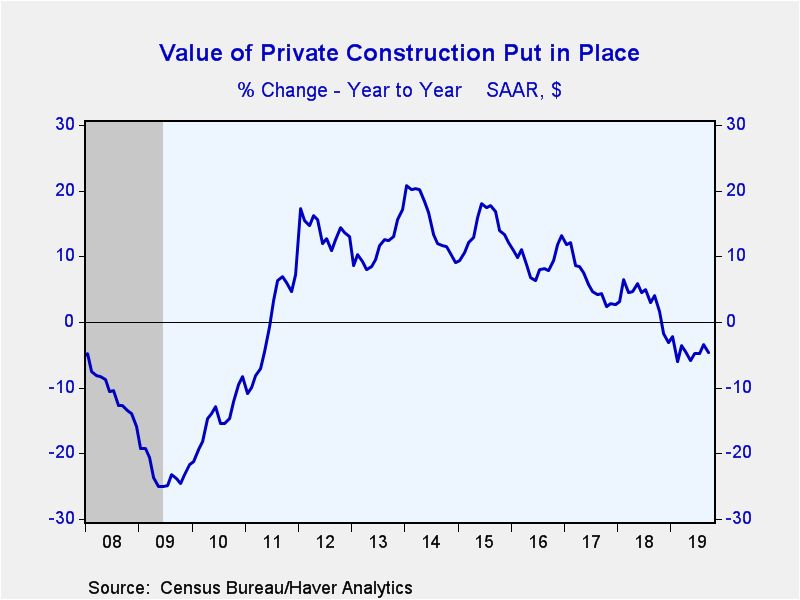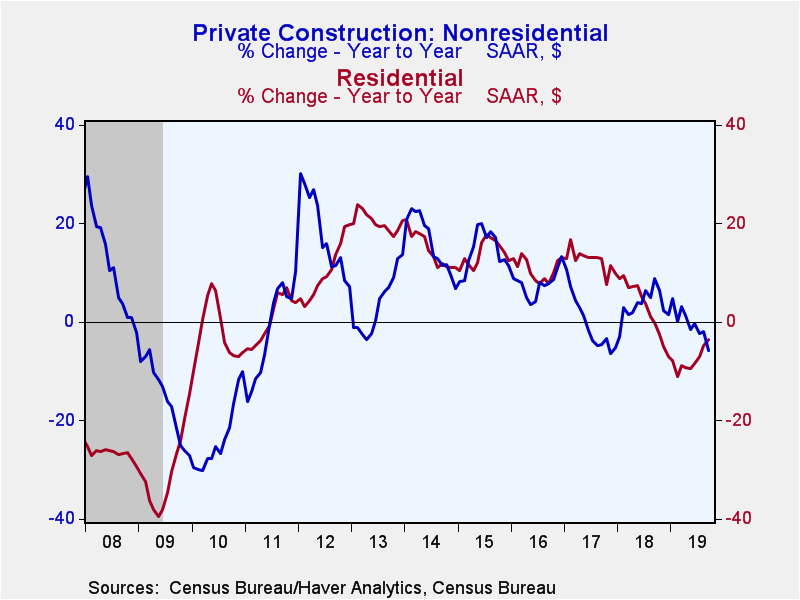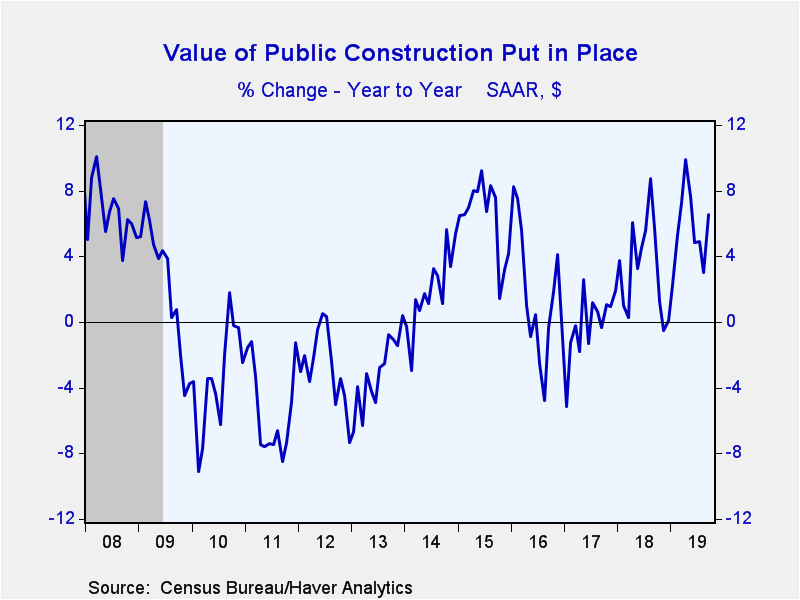 Global| Nov 01 2019
Global| Nov 01 2019U.S. Construction Spending Grows; Previous Months Net Revised Higher
Summary
The value of construction put-in-place grew a greater-than-expected 0.5% in September (-1.8% year-on-year) with net upward revisions in previous months. While August was revised down to a 0.3% decline (was +0.1%), July was revised [...]
The value of construction put-in-place grew a greater-than-expected 0.5% in September (-1.8% year-on-year) with net upward revisions in previous months. While August was revised down to a 0.3% decline (was +0.1%), July was revised meaningfully higher (+0.5% vs. unchanged). The Action Economics Forecast Survey had expected a 0.2% rise in September. Based on this data, the construction spending portion of third quarter GDP is likely to be revised higher. In the third quarter GDP report released on Wednesday private construction spending (nonresidential + residential) subtracted 0.3 percentage point from GDP growth.
Private construction increased 0.2% (-4.9% y/y) in September while public jumped 1.5% (7.2% y/y).
Residential construction led the increase in the private sector, up 0.6% (-3.7% y/y) with single family growing 1.3% (-4.8% y/y) and multifamily contracting 0.7% (-0.5% y/y). Nonresidential construction declined 0.3% (-6.2% y/y) with commercial decreasing 0.8% (-22.0% y/y) and power down 1.4% (-2.2% y/y). Other largest sectors – manufacturing and office – grew 1.2% and 0.3% respectively (-4.1% and +0.9% y/y).
Nonresidential construction, which makes up 98% of public construction, increased 1.5% in September (7.2% y/y). Construction of highways and streets, the largest category in the public sector, jumped 2.6% (6.7% y/y). Education construction, the second largest category, rose 3.1% (0.7% y/y).
The construction spending figures, some of which date back to 1946, are in Haver's USECON database. The expectations reading can be found in the AS1REPNA database.
| Construction Put in Place (SA, %) | Sep | Aug | Jul | Sep Y/Y | 2018 | 2017 | 2016 |
|---|---|---|---|---|---|---|---|
| Total | 0.5 | -0.3 | 0.5 | -1.8 | 3.3 | 4.5 | 7.1 |
| Private | 0.2 | -0.3 | 0.4 | -4.9 | 3.2 | 6.0 | 9.3 |
| Residential | 0.6 | 0.8 | 1.0 | -3.7 | 2.8 | 12.4 | 10.6 |
| Nonresidential | -0.3 | -1.5 | -0.3 | -6.2 | 3.7 | -0.7 | 7.9 |
| Public | 1.5 | -0.4 | 0.7 | 7.2 | 3.6 | -0.1 | 1.1 |
Gerald D. Cohen
AuthorMore in Author Profile »Gerald Cohen provides strategic vision and leadership of the translational economic research and policy initiatives at the Kenan Institute of Private Enterprise.
He has worked in both the public and private sectors focusing on the intersection between financial markets and economic fundamentals. He was a Senior Economist at Haver Analytics from January 2019 to February 2021. During the Obama Administration Gerald was Deputy Assistant Secretary for Macroeconomic Analysis at the U.S. Department of Treasury where he helped formulate and evaluate the impact of policy proposals on the U.S. economy. Prior to Treasury, he co-managed a global macro fund at Ziff Brothers Investments.
Gerald holds a bachelor’s of science from the Massachusetts Institute of Technology and a Ph.D. in Economics from Harvard University and is a contributing author to 30-Second Money as well as a co-author of Political Cycles and the Macroeconomy.









